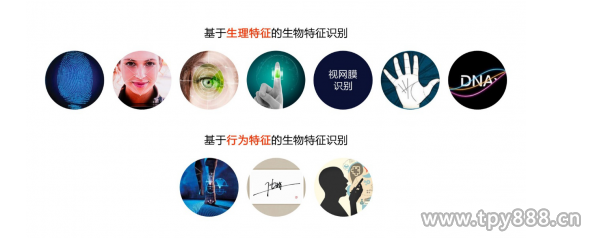Biometric technology is the use of human physiological characteristics or behavioral characteristics to identify individuals. More specifically, the computer is closely integrated with high-tech means such as optics, acoustics, biosensors and biostatistics, and uses the inherent physiological and behavioral characteristics of the human body to identify individuals (identification).
In today's information age, how to accurately identify a person's identity and protect information security has become a key social issue that must be resolved. Traditional identification is more and more difficult to meet the needs of society because it is extremely easy to forge and lose. The most convenient and secure solution is undoubtedly biometric technology. It is not only simple and fast, but also uses it for identity identification, safe, reliable and accurate. At the same time, it is easier to cooperate with computer and security, monitoring and management system integration to realize data information management. This is the most convenient and secure identification technology at present, so you don't need to remember complicated passwords, and you don't need to carry keys, smart cards and the like with you. Since biometrics recognizes people themselves, this directly determines that this type of authentication is safer and more convenient.
So, what are the current identification methods that combine biometrics?
Biometric identification based on physiological characteristics mainly includes:
Fingerprint recognition
Face recognition
Iris recognition
Vein recognition
Retina recognition
Palmprint recognition
DNA recognition (identification)
Biometrics based on behavioral characteristics mainly include:
Signature recognition
Voiceprint recognition
Gait recognition
Why is vein recognition a second-generation biometric technology?
The main purpose of this paper is how to distinguish the first and second generation biometrics. We can mainly analyze from two key points:
1. Visibility of features. If physiological or behavioral features can be seen by the naked eye, making it easy to be imitated and replicated, this biometric/behavioral-based biometric technology can be called the first generation biometric technology. Otherwise, It is a second generation biometric technology. Then we distinguish the above categories:
Fingerprint recognition, face recognition, iris recognition, palmprint recognition, signature recognition, voiceprint recognition, and gait recognition. The behavior or characteristics of these recognition technologies are dominant, in which fingerprints, faces, and palm prints can pass. Some techniques or software and hardware tools extract or copy, while voiceprints, signatures, and gaits can be deliberately mimicked to obtain highly similar behavioral features;
2. Whether it is living body recognition, the "living body recognition" we are talking about refers to the detection and identification of living bodies that cannot be replaced or simulated by external force. For example, at this year's 315th party, the host is a non-Allah's "living body" (or It is called a third-party living body. It simulates the behavior of God with some software and deceives face recognition. Such face recognition requires that the identified party do the action to display the "living body" identity for identification, and cannot be called "living body recognition" in the strict sense. The so-called "living body recognition" that can be forged by external force is a false living body recognition.
Therefore, we say that biometric technology that can satisfy both of these conditions can become a second-generation biometric technology. Let's analyze it one by one:
Fingerprint recognition: feature appearance, fingerprint is a finger surface feature, non-living recognition;
Face recognition: feature explicit, can be simulated by external force to simulate living, non-living recognition;
Iris recognition: feature explicit, although the copy/acquire feature is difficult, but it can still be done, so it is also non-living recognition;
Vein recognition: The vein is hidden inside the finger and is invisible to the naked eye. According to the vein recognition principle, only the flowing blood can absorb the specific wavelength of light and form a clear vein image, and the image is analyzed and compared by a specific algorithm. Identification. That is to say, a fake finger model or a finger image cannot be recognized by the finger vein. Therefore, finger vein recognition is a living body recognition;
Retinal recognition: The retina is the layer of blood cells at the bottom of the eye, so its characteristics are not obvious; secondly, if there is no blood flow or non-living, retinal recognition is impossible. However, retinal recognition is not attractive to consumers and it is difficult to further reduce costs;
Palmprint recognition: basically the same as fingerprint recognition, feature explicit, non-living recognition;
DNA identification (identification): DNA (deoxyribonucleic acid) is the atomic substance of cells in the human body. It is understandable that the characteristics are definitely not obvious, but DNA identification does not require living bodies to be identified. This does not require much explanation.

Signature recognition, voiceprint recognition, gait recognition: These three behavior-based biometrics, feature explicit, can be counterfeited, and non-living.
After analysis, we can make a summary:
First-generation biometrics: fingerprint recognition, face recognition, iris recognition, palmprint recognition, DNA recognition and signature recognition, voiceprint recognition, gait recognition.
Second-generation biometrics: vein recognition (divided into finger vein recognition and palm vein recognition), retinal recognition

With the continuous advancement of science and technology, combined with the various needs of the development of the human era, biometrics technology will usher in a new focus in the future, and the integration of the Internet and the Internet of Things will become a new trend. High security and high convenience biometric technology will be loved by the public!
Customized Plastic Parts,Plastic Extrusions,Iso Qualitified Pvc Pipe,Multi-Size Pvc Pipe
Ningbo Yongsheng Rubber And Plastic Products Co., Ltd. , https://www.yscnrubber.com